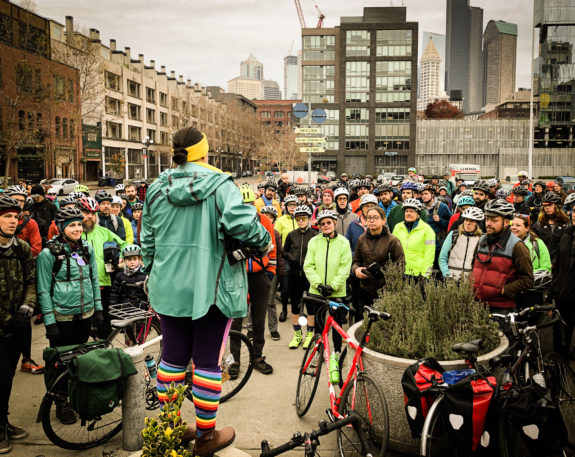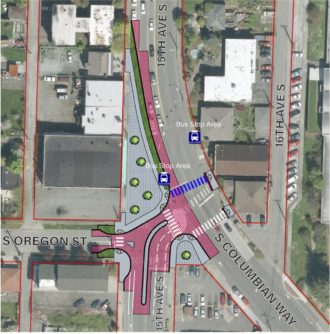
The City Council passed the 2020-21 budget Monday, including some vital investments in transportation safety and equity.
The wins are big and worth celebrating, though they are also uncertain due to the looming threat of I-976. If the initiative makes it through a court challenge from various cities, counties and organizations (including Seattle and King County), the Council will need to make some deep and devastating transportation budget cuts this winter.
Seattle Neighborhood Greenways highlighted some of the wins in a recent post, including:
- $10.35 million increase for the Georgetown to South Park Trail, the Beacon Ave Trail or a Martin Luther King Jr. Way South protected bike lane. This isn’t complete funding for these three projects, but it’s a big start.
- $4 million increase for sidewalk construction and $7 million for accessibility improvements. Again, nowhere close to meeting the city’s need, but it’s significant.
- $3.76 million increase to build out a people-centered Thomas Street between South Lake Union and Seattle Center, a vital investment for taking advantage of the reconnected street grid as part of the state’s SR 99 Viaduct Replacement Project.
- Funding a full-time Active Transportation Coordinator for Seattle Public Schools. It’s wild that the district did not already have someone tasked with encouraging kids to walk and bike to school and improving safety for those who do.
- $300,000 increase for SDOT’s Transportation Equity Program, “helping to identify and address systemic and structural equity issues.”
- $500,000 for the Duwamish Longhouse crossing. Considering our city is on indigenous land, the absolute least the city can do is heed the tribe’s request for a safe way to cross the busy and industrial W Marginal Way SW to get to the Longhouse. (If you want to go beyond this bare minimum, check out Real Rent Duwamish)
- $350,000 for a “home zone” concept focused on ways to improve safety and walkability in neighborhoods without sidewalks. Building sidewalks will require a lot more funding and time, so we need to find solutions that can work for people in the meantime.
- It’s not funded, but the budget requires SDOT to come up with a bike route maintenance plan and report back to Council.
So, yeah. This is exciting and vital work. But it and a lot of other vital work will but up the air if I-976 goes into effect. (more…)










